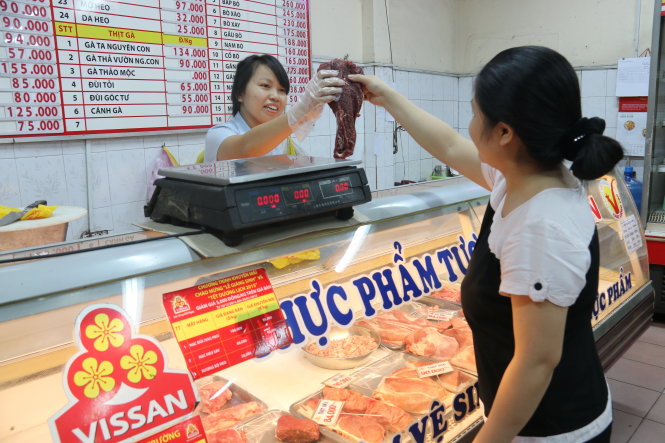More European pork and beef exporters have been licensed by Vietnamese authorities to sell their products in the 90 million-strong market in Vietnam.
>> An audio version of the story is available here
These firms want to establish a strong foothold and expand their market share in Vietnam before the EU and the Southeast Asian country sign their free trade agreement in the remaining months of this year.
France is the latest to do so after over 100 French beef exporters got their licenses from the Vietnamese Ministry of Agriculture and Rural Development to sell their boneless beef from cows under 30 months old in the Southeast Asian market, starting this month.
The licenses allowing French beef to be sold in Vietnam were issued based on the assessment of the disease control situations on cattle farms in France, conducted by the Department of Animal Health, with its results released in early March this year, according to the ministry.
There are 106 French enterprises specializing in processing unit terrestrial animal products, including beef, pork, chicken, and duck, which are eligible to export their products to Vietnam.
Since early this year, the ministry has also granted certification to 16 countries and territories so that they can ship meat to Vietnam, bringing the total number to 31 worldwide.
Thirteen out of 19 Eurozone countries are included in that figure, according to the ministry. Attractive market for foreign meat exporters
On April 20, the European Livestock and Meat Trades Union and the Polish Union of Producers and Employers of the Meat Industry co-organized a press conference in Ho Chi Minh City to introduce European beef and pork to the Vietnamese market, Phap Luat TPHCM (Ho Chi Minh City Law) newspaper reported.
They also drew up a complete promotion plan on the quality and taste of meat for Vietnam following the coming conclusion of the Vietnam-EU trade pact.
Mariusz Boguzewski, Counselor for Economic Affairs at the Polish Embassy in Hanoi, said over 100 European enterprises, including 40 Polish companies, were licensed to export meat to Vietnam in an effort to raise European shipments by five percent in 2015.
According to EU meat exporters, the 2015 goal is within reach, considering that in 2014, Vietnam imported 6,149 tons of pork from European countries, a 700 percent rise compared to 774 tons in the previous year.
Last year, those nations also sent 1,720 tons of beef to Vietnam, over 70 times the amount in 2012.
European producers have shifted their attention to the high-end market of hotels and restaurants and domestic processing businesses, Phap Luat TPHCM quoted Boguzewski as saying.
They found that they could not compete with Australian and American meat in prices, he added.
In March, a Canadian delegation led by Minister of Agriculture and Agrifood Gerry Ritz also visited Vietnam to promote their beef for local restaurants and hotel chains, Phap Luat TPHCM reported.
Domestic cow production, which meets only 75 percent of local demand, saw a 23 percent year-on-year drop in the number of cows raised locally last year with 5.23 million, according to the Animal Husbandry Association of Vietnam.
Meanwhile, Vietnam imported 181,534 cows and buffaloes from Australia and India in 2014, as the average meat production costs there were about 35 percent cheaper than the local rates, the association said.
|
According to statistics from the Vietnam Customs, Vietnam imported over 115,200 cows and buffaloes worth approximately US$124 million in the first quarter of this year, up 74.6 percent in quantity and 107 percent in value compared to the same period in 2014. Frozen chicken imports also grew rapidly to over 34,000 tons in the first three months, up over 45 percent year on year in quantity. Many local food trading companies told Tuoi Tre (Youth) newspaper that the imports of live animal and frozen meat of Vietnam in the first three months continued to increase sharply due to competitive prices and rising domestic demand. In particular, the biggest gain was the number of imported live cattle for slaughtering locally. The country imports over 30,000 live cattle from Australia for slaughter every month this year, making it the world’s biggest importer of Australian cows. |
Like us on Facebook or follow us on Twitter to get the latest news about Vietnam!




















































